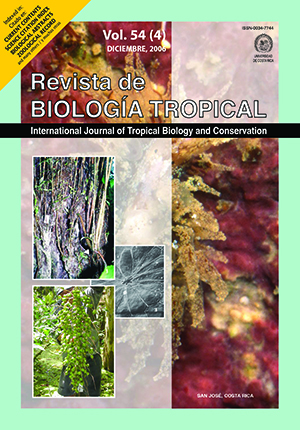Abstract
In order to understand the implications of agriculture on the environment, ecosystem health must be measured. Observing the presence of a biological indicator within an ecosystem is one such method. In this study, male euglossine bees were observed using as attractant cineole 1:8, at adjacent organic (La Paz) and conventional (La Carena) coffee farms near the Northern Barranca River, San Ramón, Alajuela, Costa Rica. Simultaneous data collections were conducted on both farms in April 2004 (late-dry season) and June 2004 (early-rainy season) and combined with the findings of August 2004 (mid-rainy season). These observations show that orchid bees are a viable bio-indicator of organic farm health on a seasonal basis. In the dry season there was no significant difference in orchid bee abundance between the two farms. There is a strong tendency for more bees during the rainy season, suggesting that orchid bee abundance is linked to seasonality and forest access.
Comments

This work is licensed under a Creative Commons Attribution 4.0 International License.
Copyright (c) 2006 Revista de Biología Tropical






